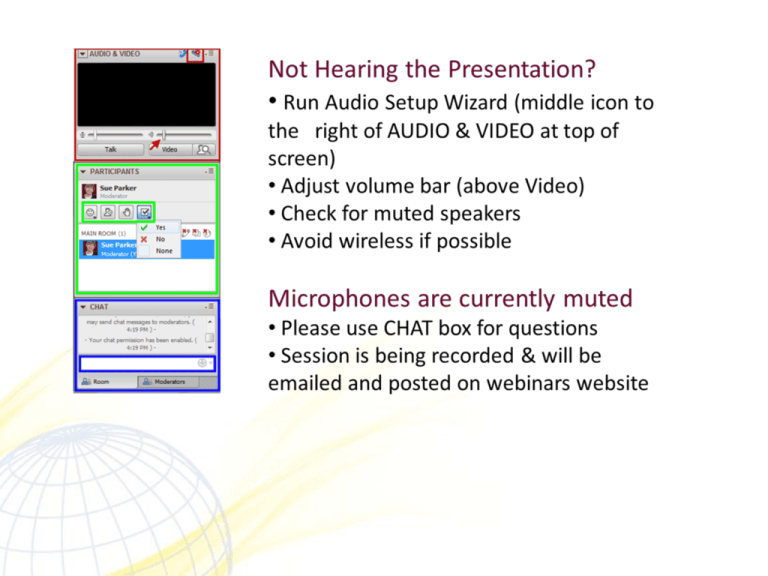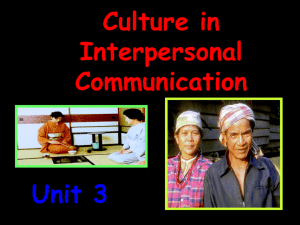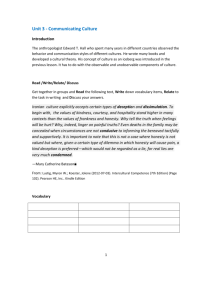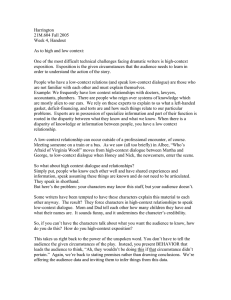Document
advertisement

Intercultural communication competence in everyday life Renata Kolodziej-Smith TODAY’S AGENDA 1. Why should we care? 2. Hall’s high-context and low-context communication 3. Hofstede’s cultural dimensions. 4. GLOBE – Global Leadership and and Organizational Behavior Effectiveness. 5. How to improve intercultural communication competence? Changing U.S. Demographics 1. The U.S. Population will change dramatically by 2050 – there will be no single majority group. 2. People of Hispanic origin (who may be of any race) will increase from 36 million to 103 million. 3. The Asian population is projected to triple, from 11 million to 33 million. 4. The Black population is projected to grow from 36 million to 61 million in 2050, an increase of 71 percent. Business 1. 2000 – 36% of Fortune Global 500 companies had their headquarters in the U.S., 16% outside the G-7 countries. 2. 2009 – 28% had headquarters in the U.S., 33% outside the G-7. McKinsey Global Institute, 2010 Dimensions of intercultural communication 1. Hall’s high-context and low-context communication 2. Hofstede’s model 3. GLOBE (Global Leadership and Organizational Behavior Effectiveness) model. Characteristics of high-context and low-context cultures High-context cultures Japanese Arab Latin American Spanish English Italian French North American Scandinavian German Swiss Low-context cultures High-context cultures are relational, collectivist, intuitive, and contemplative Low-context cultures are logical, linear, individualistic, and action-oriented High-context and low-context High-context communicators (indirect communication style) Low-context communicators (direct communication style) • Use non-verbal cues • Draw messages from the environment • Messages might be vague or ambiguous • Use stories to get to the point • Use lots of words to communicate • Present messages that are clear, concise • Rely on words to retrieve or deliver the message Hofstede’s cultural dimensions Dutch social psychologist Geert Hofstede has identified additional cultural values that impact communication. 1. 2. 3. 4. 5. 6. Power distance Individualism Masculinity Uncertainty avoidance Long-term orientation Indulgence http://geert-hofstede.com/ GLOBE The "Global Leadership and Organizational Behavior Effectiveness" (GLOBE) Research Program (2004, 2007) builds on findings by Hofstede. It is one of the most up to date research programs investigating the influence of culture on organizational behavior. GLOBE (Global Leadership and Organizational Behavior Effectiveness, 2007) How to improve intercultural communication competence? Everyday situations • Cultural norms dictate how people interact in public. In Egypt and many North African countries, there is much more interaction on the streets than in the United States. In some European countries, there is much less smiling at strangers. In Japan, there is very little interaction with strangers (verbal or nonverbal) in public. • In contact cultures (e.g. Middle Eastern, India) people stand closer together while talking, touch more frequently, and speak in louder voice. There is no concept of “personal space” typical for the U.S. • In the United States, silence is sometimes viewed negatively, as something that is embarrassing isolating, or representative of a lack of knowledge. • In contrast, many cultural groups (Japanese and East Asian cultures) place a primary emphasis on silence and harmony and a secondary emphasis on speech. Business Business Etiquette varies from culture to culture and is related to differences in values and communication styles. 1. Most cultural groups tend to be more formal in business contexts than are U.S. Americans. • In Latin America, great importance is attached to courtesy. • In many European countries, high-level officials and business executives expect to be treated with solemnity and respect. 2. When conducting business in most cultures, people should be very careful to avoid excessive familiarity (no slouching or lounging in general), especially in initial meetings. • An emphasis on formality extends to language use. • Some cultures do not like informality, the use of first names, or other forms of familiarity because they are interpreted as signs of disrespect (e.g. European countries). 3. Concept of time and punctuality varies in different cultures – time is NOT money everywhere (e.g. Mexico). Several behaviors can make working with a multilingual workforce easier. • Don't assume that people speaking a language other than English are talking about you. • Speak simple, but not simple-minded, English. • Avoid using slang or jargon (e.g. sport: football terms). • Try not to crowd too much into one sentence, and pause between sentences. • Pronounce words clearly and speak slowly. • Don't be condescending and don't raise your voice. Even more importantly: be observant. The rule: treat others as you want to be treated doesn’t apply here!











